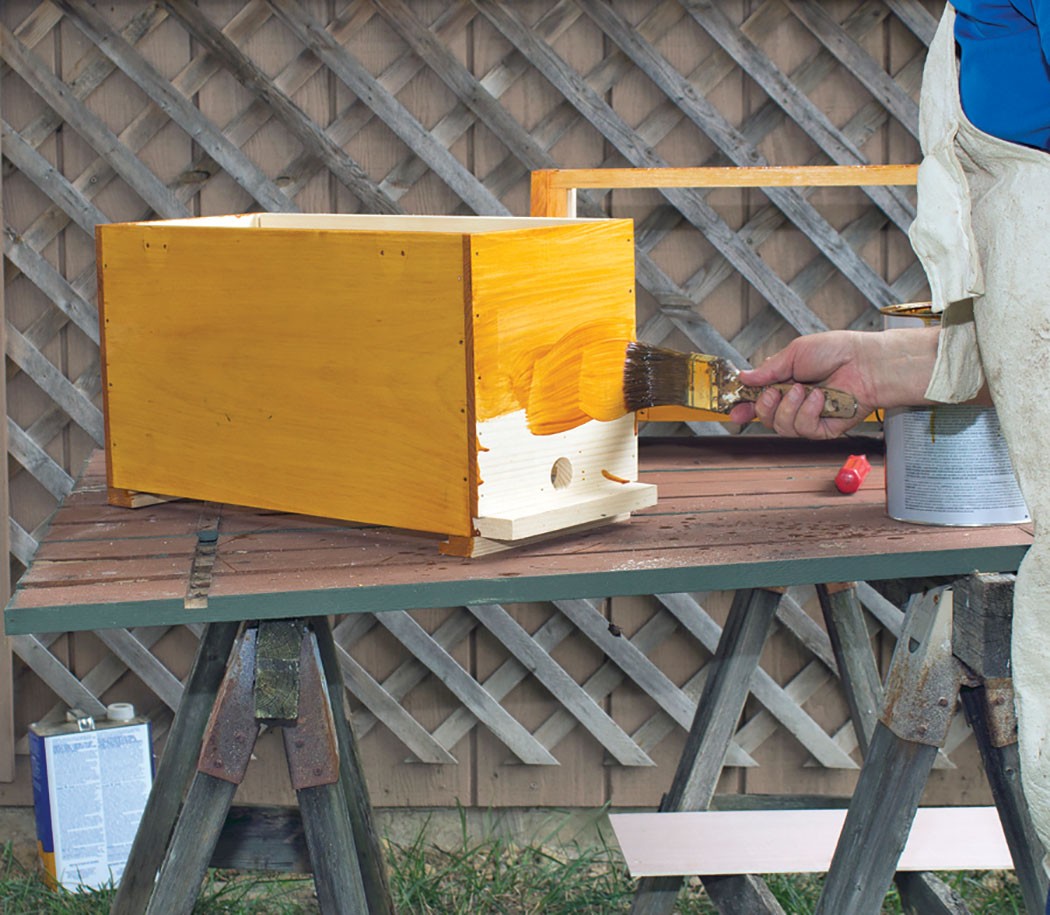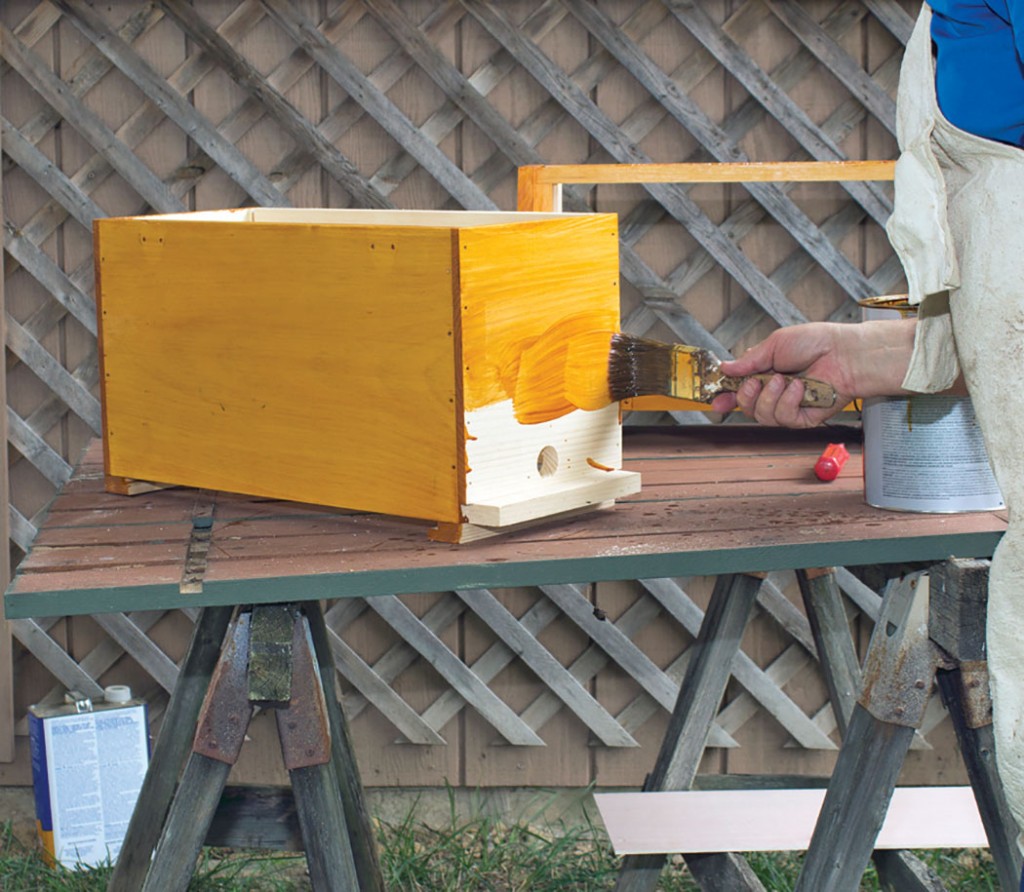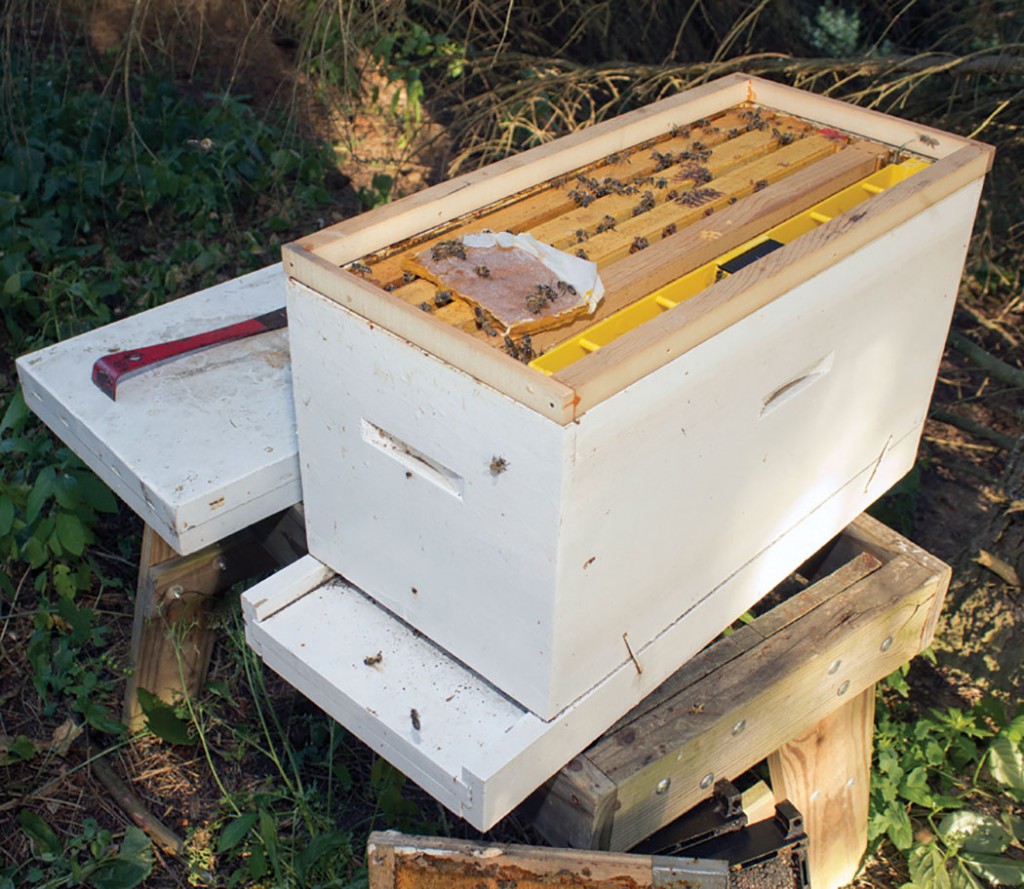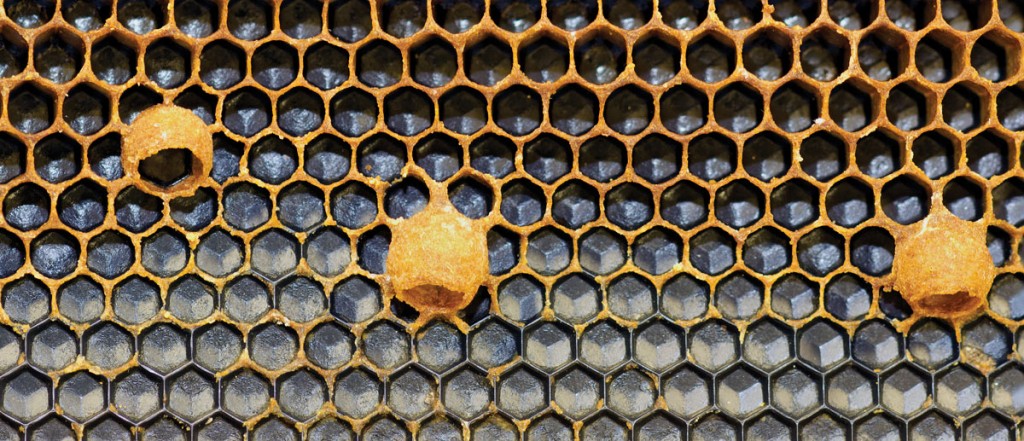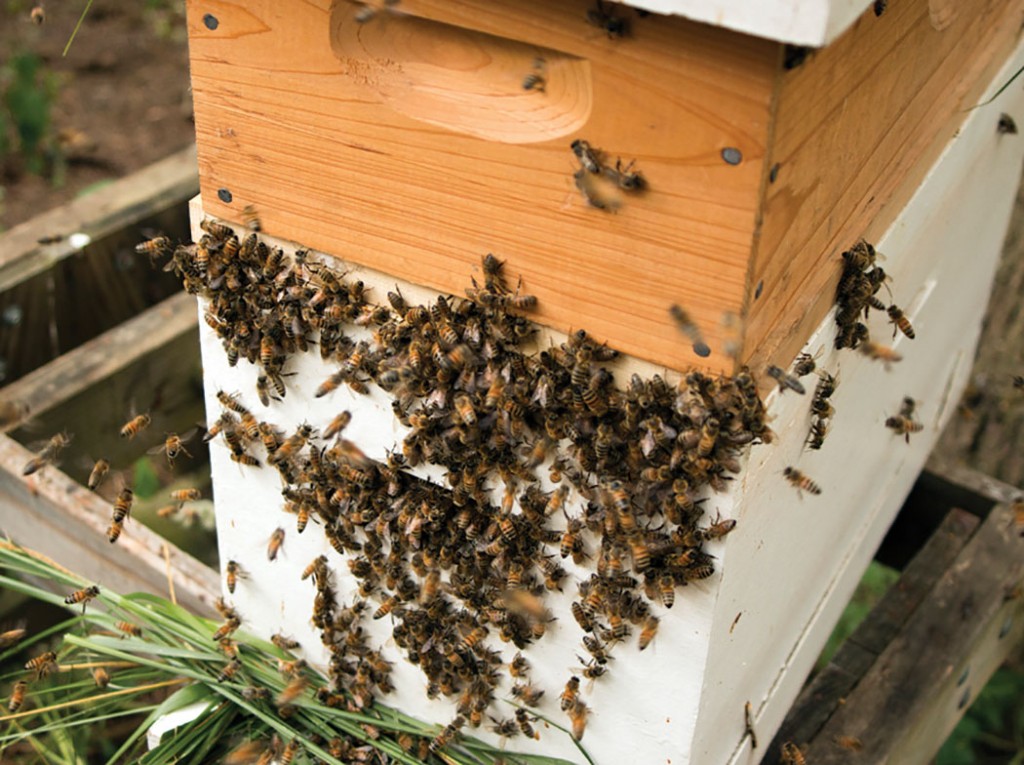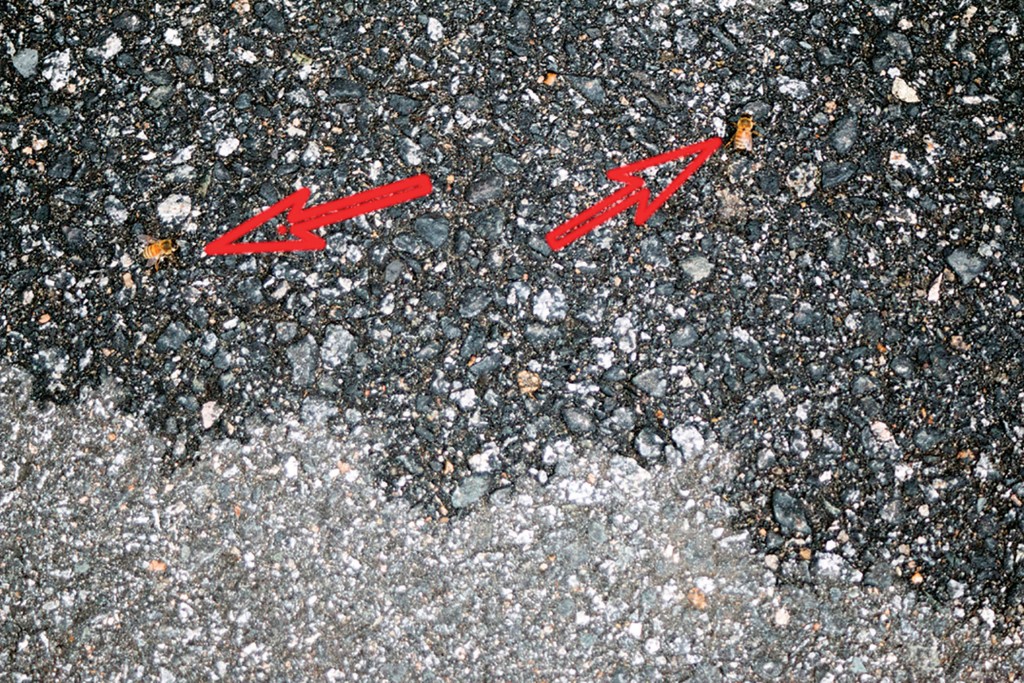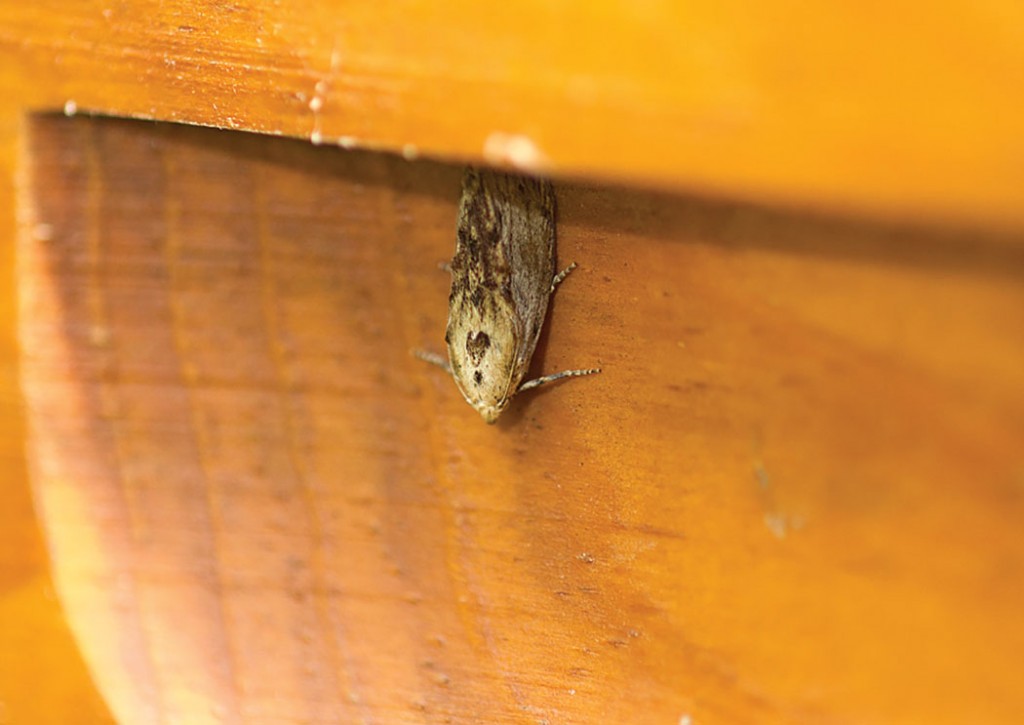by James E. Tew
So you want to paint your hive ware?
The very first article that I ever wrote for beekeeping was published in the American Bee Journal and was entitled, “Paint, A Vital Protective Film.” The title gives the article away. My first piece reeked with excitement and beekeeping intrigue. Yeah, right. At the time, I knew more about paint than I knew about bees so I went that way.
Lead paint and beehives
In my earliest paint years, lead-based paints were everywhere – but even then, it was well known that such paints should not be used around food handling areas or children. In the 1970s, lead of any form could no longer be an ingredient of paint. I suspect that it was during early beekeeping years, when lead was a common paint component, that the “don’t paint the hive insides,” recommendation became engrained in the bee literature. That recommendation lingers until today but from a paint perspective, it is no longer correct. If there were a modern reason for not coating the insides of hive boxes, it would be the cost of quality latex paint. Painting the insides would almost double the price of the hive box paint job.
The advice gave it away
Think about it. In general, latex paint is applied to the outer surfaces of the hive boxes, but the insides are left uncoated, “to allow unpainted wood to absorb internal moisture.” As you all know very well, water is water. Within a few years, the unpainted insides will begin to stain and decay along the bottom edge, the box-joint corners and the thin upper lip at the frame rest. Additionally, the internal moisture will work all the way through the wood to the outside where it will degrade the external paint film from the backside of the film – not the weathering front. Finally, regardless, the bees are going to coat the inner surface with propolis. Over time, one way or the other, even unpainted internal wood surfaces get a protective coating.
Your call. Paint the inside if you want to.
But only apply modern latex paint. If you know someone who knows someone who can get you industrial coatings that will last forever, do not apply it. Those are not the products about which I am writing.
“But the bees like the feel of raw wood better . . .” That’s a beekeeper thing. I don’t know of any proof to support this notion. I don’t know that a smooth, planed pine board has much in common with rotten, punkie wood in a natural cavity. So paint the inside if you are truly trying to protect the hive body from the weather. It will look odd to other beekeepers simply because we do not often do that. Ultimately, an unpainted hive body will last about seven years. A painted box will last about 10 years. As is so often the case, it’s your call1.
Stains and Wood Preservatives
I am also a lifelong woodworker so I like naturally finished wood; therefore, I frequently coat my beehives with an exterior stain, having a UV inhibitor as an ingredient, just because I like the look. The stain finish is probably not as durable as a latex paint film, but it looks so nature-like.
For the foreseeable future, I would not use wood preservatives. It has been said that these preservatives are a type of penetrating wood finish with a pesticide as an ingredient. The MSDS sheets rarely mention bees, so I don’t feel secure about these products. They may be fine, but at this time, I am uncertain. (Here come the responses from those who know more than I.) Additionally, while I like the appearance of a wood-stained hive box, I do not coat the inside with it. Only use latex for interior coating. Again, just to be perfectly safe.
I knew it would happen, but I was still surprised that it did
In recent articles, I have written about setting up a hobby queen production operation. Several days ago, I set up a queenless queen cell starter hive. As I said in the posted video2, my intentions are only to produce a small number of replacement queens for my small apiary operation. I mean really small – like five to 15 queens. I would like to use some for late season splits and then to use others for replacement queens. I only have a few nuc boxes and (again) I do not want a big operation so I thought that in some instances, I might use mature queen cells for requeening rather than using a mated queen.
In a five-frame nuc, I put in two frames of capped brood, a good amount of pollen, and some honey. I also put in a grafting frame with cups for the bees to attach and to acquire the odor of the improvised hive. I filled the feeder with warm syrup and also put on a pollen substitute patty. I described this plan to you last month. I gave the unit a couple of days of quiet to settle down and to (probably) initiate emergency cells.
The realization
During the following four days, I only opened the small colony one time. It seemed to be a good time to graft. I fired the smoker even though the colony was small. In the video that I referenced above, the bees seemed flighty and in a bit of disarray. Near the end of the clip, as I talked to you, I got popped on the edge of my lip. I said in the video that it really hurt, but it really happened and though a bit embarrassing, I left the episode in the clip. In a way, I am glad I left it. These bees were always too testy. They should have been more resolute and calm. As I captured the video, my thoughts were that the weather had been dry and nectar flow was probably scant. That was probably part of the issue, but upon returning, I finally realized that something else was fully underway. The starter colony was experiencing aggressive robbing.
In my defense
In my defense, just last month, I mentioned robbing and indicated that the errant behavior could be used to determine if a nectar flow was underway – or not. I knew the behavior was typical in mid to late Summer; but just four days before, I had not a single problem setting up this unit. I had opened it once, and other than being a bit aggressive, all seemed okay. But it was not okay at all. In fact, I suspect that the feistiness and the stings I took were because this unit was already under attack. The bees had entered a robber bee frenzy that essentially means that all colonies, if their defenses are violated in the yard, are at risk.
Robbing behavior
Full-blown robbing behavior is – I suppose – like bee foragers on steroids. They are not evil bees – nor are they diseased in some way. My colonies are huge.
And typically, they are all positioned near each other. From a natural stance, there are simply too many bees too close together. I have written about the management phenomena that cause this behavior. We do not want a lot of apiaries to maintain. We don’t want to have to carry supers and equipment. We want our hives in nice straight rows. Though robbing occurs in the natural hive setting, it really occurs in the artificial setting of the managed beeyard.
Normal foragers have essentially nothing to do. No natural sources are out there so the only available resource is that held by the neighboring colony. It’s hard out there for a colony. Also, there are many thousands of unemployed bees, and they are aggressively looking for work.
Make no mistake. For the bees, robbing is very hard, dangerous work. If you are a bee, few other bees are your friends. The frenzy to get to the meager food source that is being looted makes the robber take on an odd, wasp-like appearance. Most of the body hair is worn away and the wings are tattered and worn.
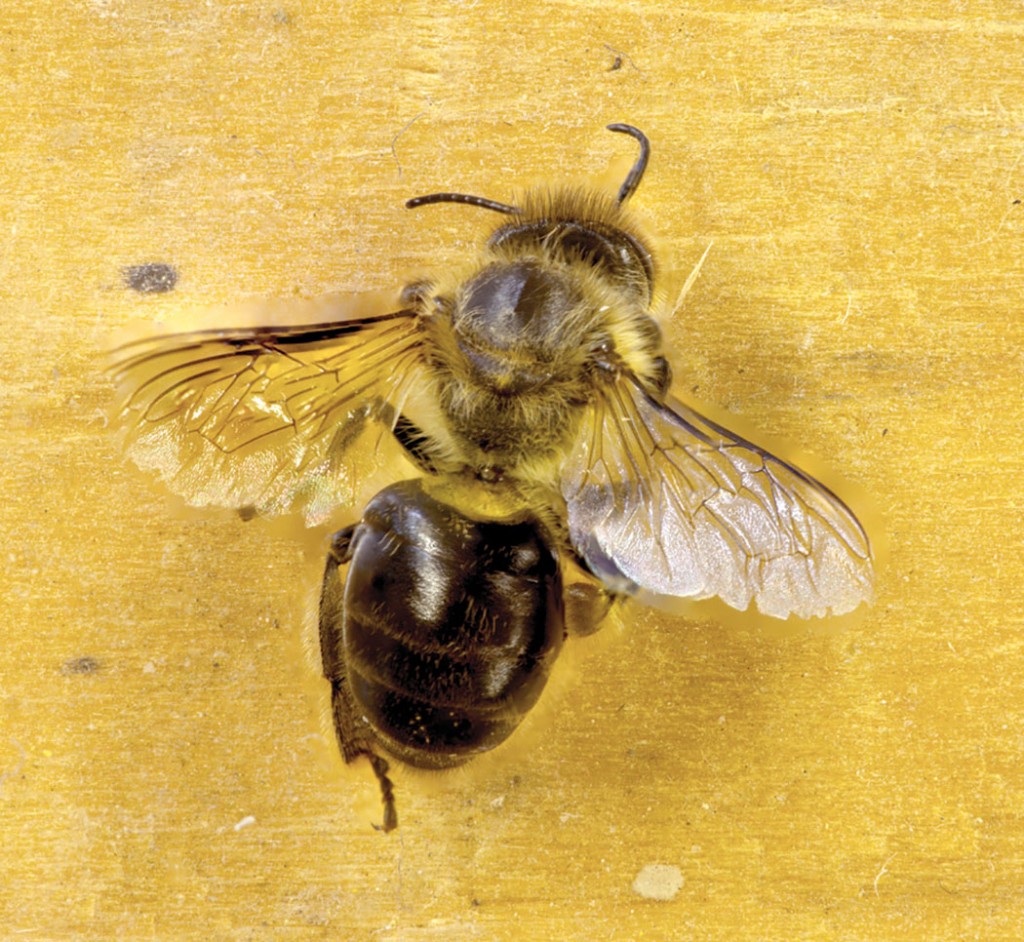
A robber honey bee denuded of hair and sporting tattered wings. Robbing is dangerous and difficult work for a honey bee.
I’m most likely done for the year
I have worked out a technique for making wax queen cups. I have a grafting tool that I like and have plans to attach an LED light for my aging eyes. I also have an untested plan to use wooden golf tees to hold my queen cups.
While I can continue to develop devices and procedures until there is a nectar flow and bees are finally back to normal foraging business, I suspect that I am finished. There could be a window during goldenrod bloom, but until then, I would be risking all my colonies to this irrational behavior. To get a look at the action, watch the short video at the URL given below3.
I must leave on a trip. If that were not the case, I would explore grafting at night. In that way, I could (theoretically) get the grafting bars back in the starter colony and get it closed before the insanity starts. But I won’t be here. Next month, I will give an update – if there is one. How about a subject change?
Bees foraging on asphalt
I was waiting for two of my grandchildren in a play area while vacationing in North Carolina. In a hot, dry parking lot someone had spilled a sugared drink. There was no liquid left, but on the darkened outline of the spilled soda, there she was – a forager bee foraging on sticky, hot asphalt. How could she ever find such a meager, marginal source of nectar? Do they just fly around sampling everything? I mean are bees good at finding minor sources or what? I had the thought that she was probably only one in the beehive crowd that could find it.
I had forgotten the bees until I returned about an hour later and there they were – two foragers this time. Did one recruit the other to this do-nothing sugar source? Did these two bees happen to find the same meager source? I have no hypothesis that would explain how they found such an off-the-wall source. I don’t know how they do it, but of course, I photographed the event. See below.
For the Brand New Beekeeper –
Wax moths in the apiary
Wax moths are considered to be beehive pests – and they are pests. But it’s not all their fault. The wax moth exits in small populations in nature, but their numbers balloon when they find all your nice combs stacked in a storage shed. Then they become a problem with their abnormally high populations on your abnormally large amount of unprotected combs.
In reality they are in and around beehives nearly all the time in warm climates. The bees in healthy colonies just keep them contained. In cold climates the moths die back only to slowly return the next Summer as the season progresses. Indeed, wax moths do not kill healthy colonies. Something else weakens or kills the colony and the wax moth, a scavenger, moves in to finish things off.
Adult moths, like the one shown in the photo, are uniquely designed to move about within the dark, crowded colony. The moths’ tent like body, with antennas folded tightly against its body, allows them to easily move throughout the crowded hive infrastructure; however, adults may never actually enter, but only get as far as laying their eggs in outside hive cracks. Young, small larvae will squeeze through these tiny openings to gain colony access and grow to maturity inside the dark hive.
A honey bee disease and pest app for your smart phone
If you are new to beekeeping, or even if you are not so new, you might find Bee Health from Alberta Agriculture and Forestry to be a helpful and enjoyable resource. The app is colorful, complete with all common diseases and pests, easy to use, and free. Of course, it has some information and recommendations for wax moth control.
Odds and Ends
Sincere thanks for the hard work and energy the New Hampshire Capital Area Beekeepers’ Association expended in organizing a meeting and having me visit. It was a beautiful day at a beautiful location in a beautiful state. For me, it was truly an enjoyable event. Thank you. (Plus the food and drink were good.)
Posting Bee Culture Article Photos
I’m trying to improve the still photos that I post that support my monthly articles. If you are inclined, have a look at:
Now that’s a lot to hand copy if you are not reading the electronic version of Bee Culture. For those readers who must hand copy the address, I have added a QR code and shortened the URL to:
For many reasons, this photo posting is a new effort that will probably bust the first few times I try to incorporate it, but if you have time, have a look. Even if it works, at this point, it’s nothing special, but it is an effort to improve delivery of beekeeping information through ever-changing media devices and systems. Until next month, thanks.
Dr. James E. Tew, State Specialist, Beekeeping, The Alabama Cooperative Extension System, Auburn University; Emeritus Faculty, The Ohio State University. Tewbee2@gmail.com; http://www.onetew.com; One Tew Bee RSS Feed (www.onetew.com/feed/); http://www.facebook.com/tewbee2; @onetewbee Youtube: https://www.youtube.com/user/onetewbee/videos






